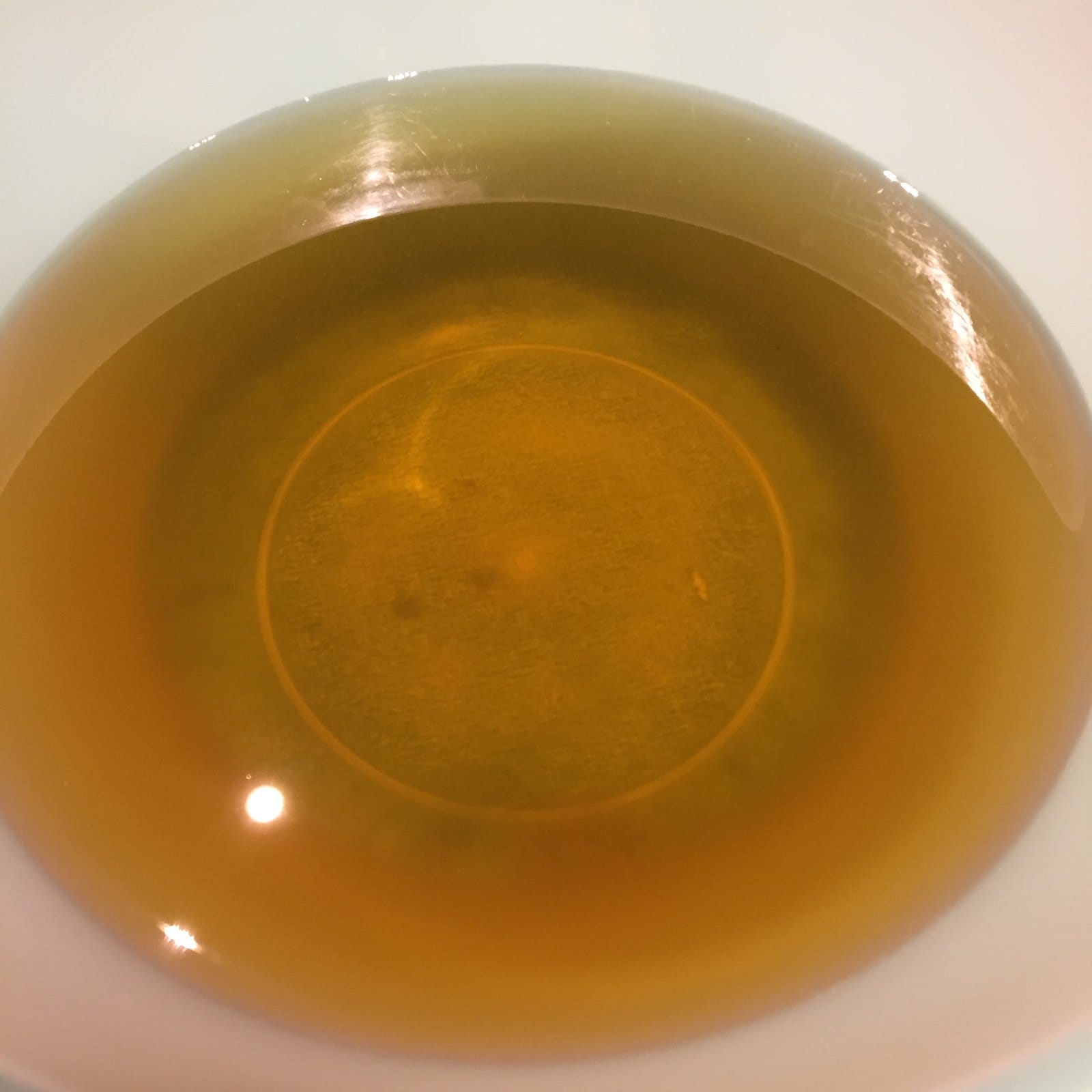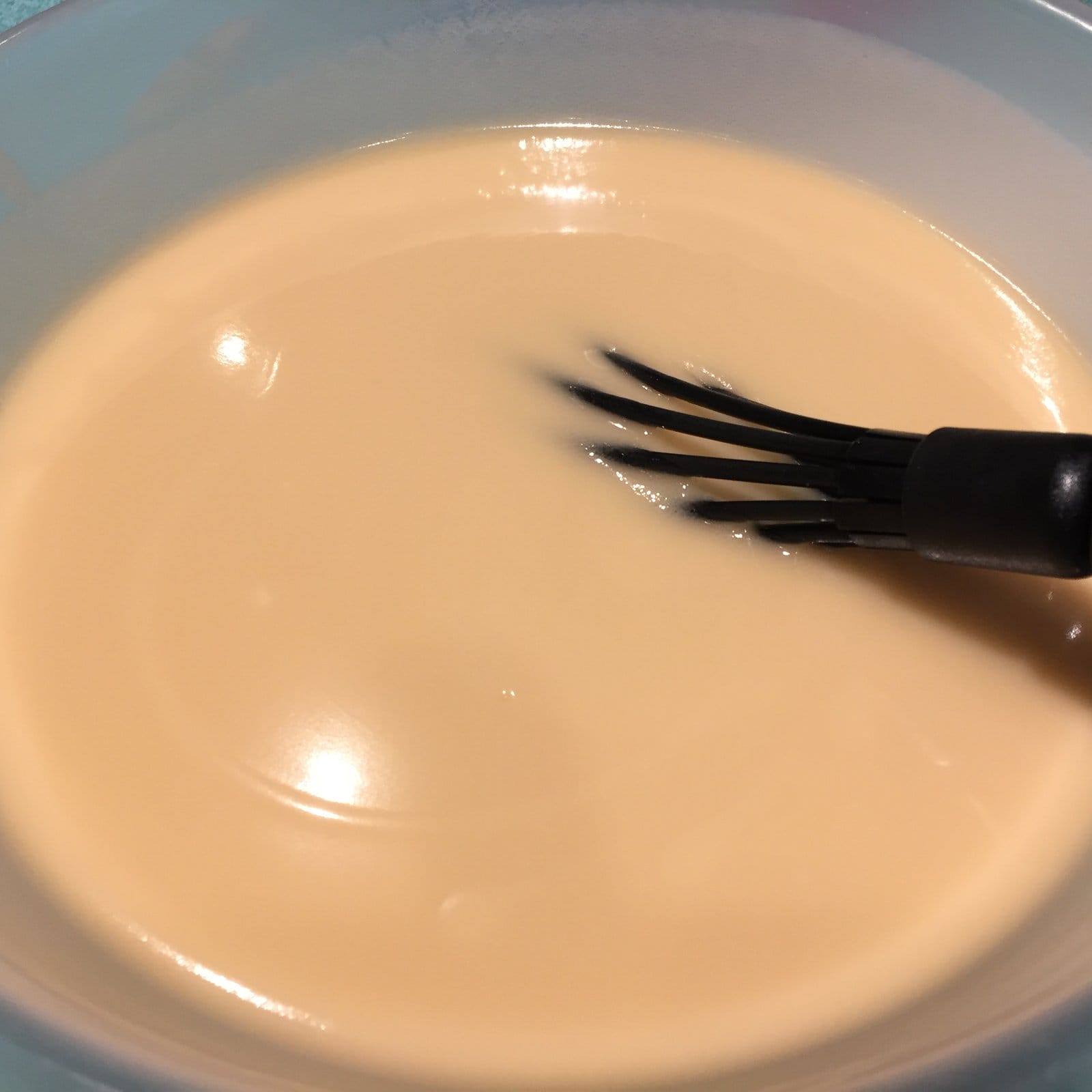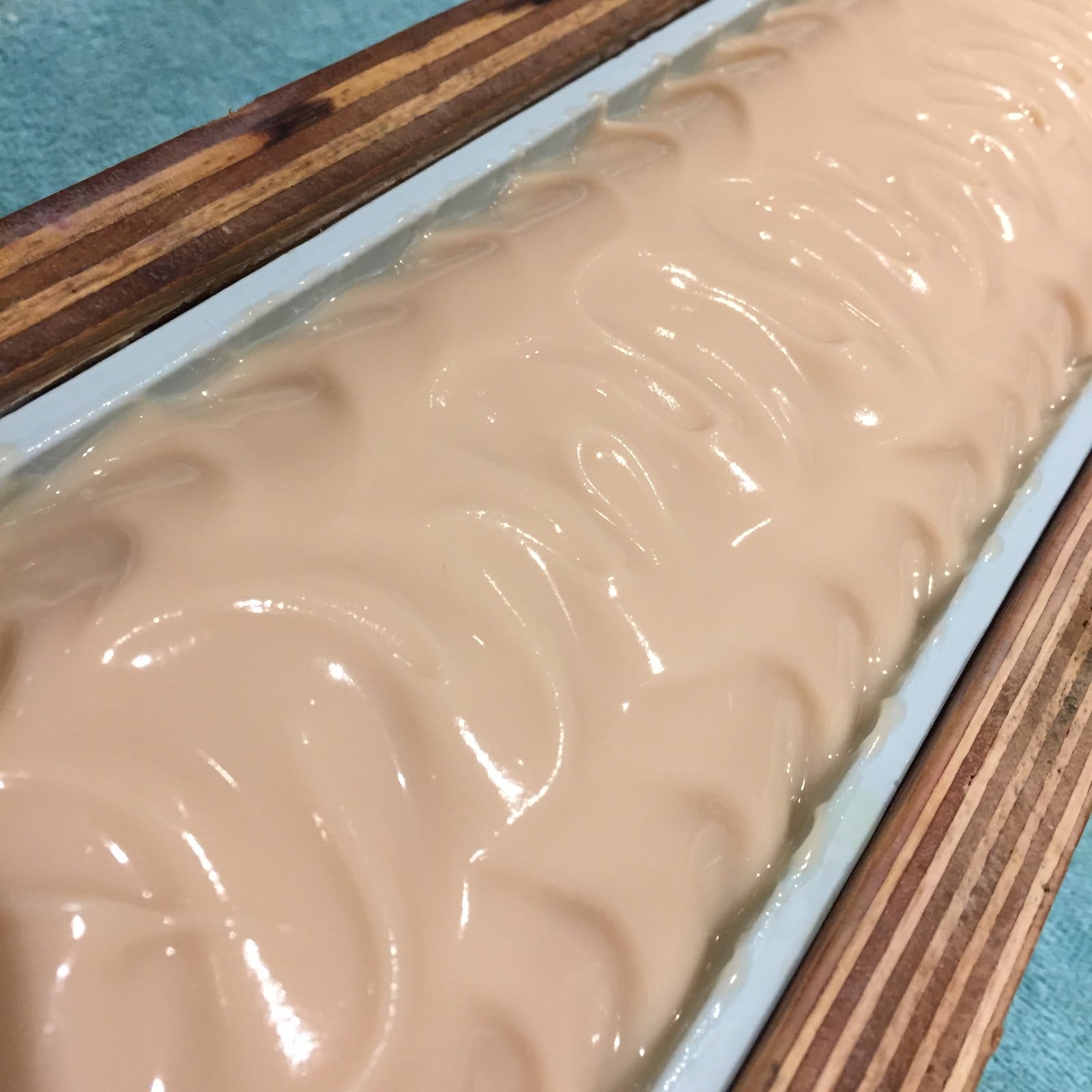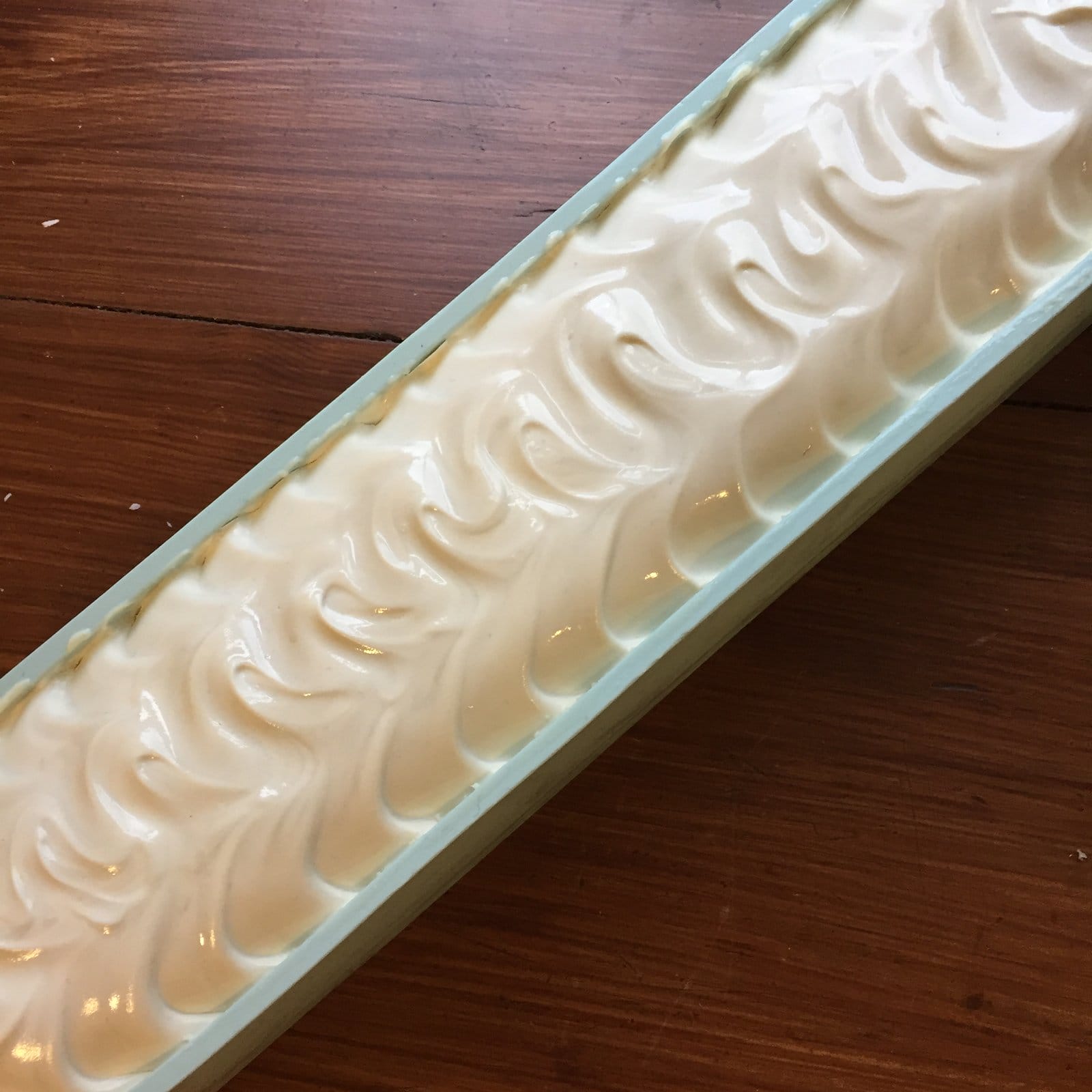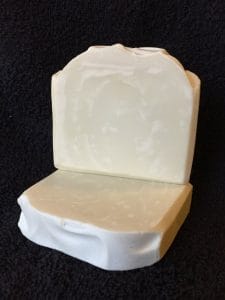I made the first batch of Castile soap back in mid January and, while convention dictates that it should cure for at least 6 months before use, the devil on my shoulder insisted that I try it out this week, a mere 10 weeks later.
I helped myself to the thickest of the end pieces, and snapped a quick photo:
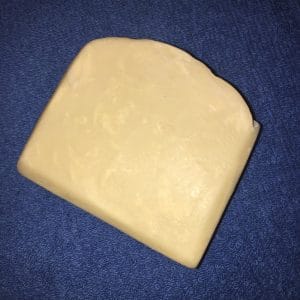
It’s already a very hard bar, easily as hard as my regular bars after their full 6 week cure. This surprised me somewhat as I’d read that one of the reasons for curing for so long is because it needs longer to harden up.
Detractors of Castile soap often use the word ‘slimy’ to describe it, so I wasn’t expecting too much when I lathered up. I ran a little warm water and started turning the bar over and over in my hands. After a few initial biggish bubbles, the lather soon settled into a creamy lather with very small bubbles, an almost lotion type texture. I would definitely describe the feel of the bar as ‘silky’ rather than the ‘slimy’! I would have got a photo or a quick video but there were no spare hands around 😀 After rinsing and drying my hands felt soft and smooth, and I can see why Castile soap is recommended for dry or sensitive skin.
I’ve spoken to other soapmakers who say that they’re more than happy to use their Castile soap before the traditional 6 month cure is up. Others tell me that there’s a distinct difference in the texture of the lather if the soap is left for the full 6 months (or longer). I’m going to enroll an extra pair of hands to help and get a couple of photos or a video of the lather as it is now, and again in two and four months time. I should then have a better idea of the beneficial effect (or otherwise!) of the extended cure time.
If you have any thoughts about Castile soap, be they be for or against, please post below – I’d love to hear from you.

